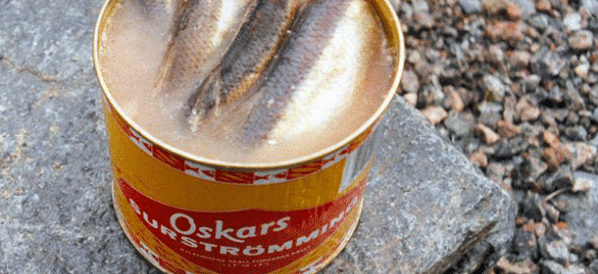 6 Terms
6 TermsHome > Terms > English (EN) > toys
toys
American children and toys, in many ways, scarcely differ from their consociates worldwide except in affluence—more toys and more expensive ones. Dolls, wagons, costumes, bicycles and war toys have been gendered dreams for generations, even as historically American toys—cowboy outfits and guns or the postwar Barbie—have spread around the globe. Class and race have changed perceptions of these “standard toys,” as Toni Morrison sadly underscored in her novel The Bluest Eye, yet children have scarcely been more equal in other nations. Nonetheless, several important characteristics may set American toys and play apart from other nations.
Affluence and ownership are still important characteristics. For postwar children, as cinema and television reinforce imagery, Christmas and birthdays became intensive and competitive celebrations of goods including multiple and expensive toys. Electronic games, elaborate outdoor toys and innumerable small toys create a bounty that children are taught to own. Even if they share with friends, lines of property (and position) are drawn early on by who owns what, or by who fails to get coveted toys (a parental competition satirized in media). Obviously, this leaves out some children from the experience of a general cultural ideal—while cities, schools and institutions push drives to collect “toys for tots,” the return to school or neighborhood gatherings after Christmas remain difficult.
American toys also differ in quality, price and even style. Yuppie parents may favor educational toys or classic (sometimes expensive) basics in wood and cloth. Some ask for dolls that reflect their own features and lifestyles—African American toys represent a special subgenre even within Barbie lines. Toys are also highly gendered in advertising and consumption, and graded for age divisions that encompass an adult market as well as metaphoric extensions (sports cars or electronics, for example, may be referred to as toys for adults).
The sheer numbers of toys and the created desire that drives sales also underscores a longstanding synergy of media and commodities. Captain Midnight Decoder Rings, Howdy Doody puppets, Brady Bunch lunch-boxes, Carebears and generations of Star Trek toys all speak to the power of television and film to sell to younger audiences (and their beleaguered parents). While children’s television codes have attacked direct manipulative marketing, media giants like Disney have had generations of spin-off toys that sell movies, television, fantasy vacations and “happiness.” Indeed, Disney’s Toy Story and its sequel represent both reflections on toys and a continuing bonus in sales— old and new toys are agents in the narrative, markers of memory and commodities in stores. In another synergy McDonald’s represents one of the world’s largest toy manufacturers, in independent productions and linked to media.
While these are now global phenomena, many have been honed on generations of postwar children who, as baby boomers, bring both nostalgia and criticism to new generations of sales. This also creates secondary markets for toys as collectibles that influence not only family relics but new purchases, as exemplified in the Beanie Baby craze, where value is besmirched by any signs of actual play.
Hence, intense marketing and production also shape American toys. While handcrafted toys or designer lines appeal to wealthier consumers, Toys ‘r’ Us—now global— has a strong monopoly on general sales in concert with major manufacturers like Mattel.
In the 1980s and 1990s, toy marketing has been driven by “the toy” of the year, from Cabbage Patch Kids to Furby, where constructed scarcities drive prices to extremes as demonstrations of Christmas love. This consumerism also made toys a vanguard for development of e-commerce.
- Part of Speech: noun
- Synonym(s):
- Blossary:
- Industry/Domain: Culture
- Category: American culture
- Company: Routledge
- Product:
- Acronym-Abbreviation:
Other Languages:
Member comments
Terms in the News
Billy Morgan
Sports; Snowboarding
The British snowboarder Billy Morgan has landed the sport’s first ever 1800 quadruple cork. The rider, who represented Great Britain in the 2014 Winter Olympics in Sochi, was in Livigno, Italy, when he achieved the man-oeuvre. It involves flipping four times, while body also spins with five complete rotations on a sideways or downward-facing axis. The trick ...
Marzieh Afkham
Broadcasting & receiving; News
Marzieh Afkham, who is the country’s first foreign ministry spokeswoman, will head a mission in east Asia, the state news agency reported. It is not clear to which country she will be posted as her appointment has yet to be announced officially. Afkham will only be the second female ambassador Iran has had. Under the last shah’s rule, Mehrangiz Dolatshahi, a ...
Weekly Packet
Language; Online services; Slang; Internet
Weekly Packet or "Paquete Semanal" as it is known in Cuba is a term used by Cubans to describe the information that is gathered from the internet outside of Cuba and saved onto hard drives to be transported into Cuba itself. Weekly Packets are then sold to Cuban's without internet access, allowing them to obtain information just days - and sometimes hours - after it ...
Asian Infrastructure Investment Bank (AIIB)
Banking; Investment banking
The Asian Infrastructure Investment Bank (AIIB) is an international financial institution established to address the need in Asia for infrastructure development. According to the Asian Development Bank, Asia needs $800 billion each year for roads, ports, power plants or other infrastructure projects before 2020. Originally proposed by China in 2013, a signing ...
Spartan
Online services; Internet
Spartan is the codename given to the new Microsoft Windows 10 browser that will replace Microsoft Windows Internet Explorer. The new browser will be built from the ground up and disregard any code from the IE platform. It has a new rendering engine that is built to be compatible with how the web is written today. The name Spartan is named after the ...
Featured Terms
Surstromming
A northern swedish dish that consists of fermented baltic herring, it is usually sold in cans like the one in the picture. While they are being ...
Contributor
Featured blossaries
Silentchapel
0
Terms
95
Blossaries
10
Followers
Mergers and Acquisitions by Microsoft.
 20 Terms
20 Terms
Browers Terms By Category
- Ceramics(605)
- Fine art(254)
- Sculpture(239)
- Modern art(176)
- Oil painting(114)
- Beadwork(40)
Arts & crafts(1468) Terms
- News(147)
- Radio & TV broadcasting equipment(126)
- TV equipment(9)
- Set top box(6)
- Radios & accessories(5)
- TV antenna(1)
Broadcasting & receiving(296) Terms
- Action toys(4)
- Skill toys(3)
- Animals & stuffed toys(2)
- Educational toys(1)
- Baby toys(1)
Toys and games(11) Terms
- Chocolate(453)
- Hard candy(22)
- Gum(14)
- Gummies(9)
- Lollies(8)
- Caramels(6)




